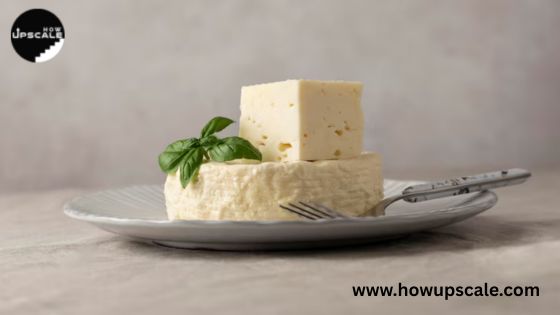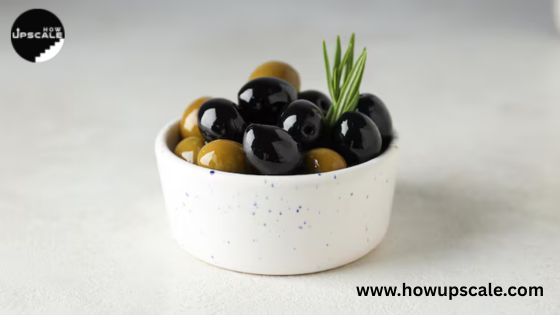5 Mukhi Rudraksha Benefits: Myth, Ayurveda, and Science Explained

Rudraksha beads are the seeds of the Elaeocarpus ganitrus tree and are revered in Hinduism as sacred objects of spiritual power. The Sanskrit name Rudraksha literally means “Shiva’s eyes” (from Rudra = Shiva, Aksha = eyes), reflecting the myth that these beads originated from the tears of Lord Shiva. Rudrakshas come in different varieties, classified by the number of natural grooves or “mukhis” on the seed. These range typically from 1 to 21 faces.
The 5 Mukhi (Panchamukhi) Rudraksha has exactly five longitudinal lines on its surface. It is one of the most common types of Rudraksha – indeed it constitutes roughly half of all beads harvested and is widely worn by men, women and even children with no harm. In physical appearance a Panchamukhi bead is roughly spherical and pentagonal in cross-section, reflecting its five chambers.
These five faces are believed in tradition to embody spiritual powers. Practitioners often wear a 5 Mukhi mala (garland) or pendant for general well-being and peace of mind. One modern commentary notes that Panchamukhi beads “lower your blood pressure, calm your nerves, and bring a certain calmness and alertness in your nervous system,” making them suitable for “general wellbeing”.
In this post we will explore the traditional (mythological and Ayurvedic) claims about the 5 Mukhi Rudraksha as well as what, if anything, science has to say. We will also give practical guidance on how to use these beads, how to ensure you get an authentic one, and where to buy them safely.
Mythological Significance and Historical Background
In Hindu legend, Rudraksha beads are said to be divine gifts connected to Lord Shiva. Many scriptures (e.g. the Śiva Purāṇa and Devī Bhāgavata Purāṇa) mention Rudraksha as literally the tears or eye‑drops of Shiva. A popular story relates that after a great victory or during deep meditation, Shiva’s compassionate tears fell to earth and sprouted into Rudraksha trees. Thus the beads symbolically carry Shiva’s consciousness and are treated as sacred.
The five-faced bead in particular is associated with Shiva’s fiercer aspect, often called Kalagni-Rudra (Rudra with the fire of dissolution). One mainstream astrology article explains that Panchamukhi Rudraksha “is believed to be blessed by Lord Shiva Himself in the form of Lord Kalagni Rudra”. In fact, a description from the Mahā Śiva Purāṇa is often quoted: “the 5 mukhi Rudraksha is Rudra Himself”.
In other words, the bead is treated as embodying Shiva’s energy. Traditional sources also link Panchamukhi Rudraksha to Lord Shiva’s identity as the Guru of the gods. In Vedic astrology, 5 Mukhi is said to be ruled by Jupiter (Guru), and is even called Devaguru māla (bead of the divine teacher).
Because of these associations, Panchamukhi Rudraksha is worn by many spiritual seekers. It is said to purify the mind and absolve sins when worn with faith. The How Upscale notes that devotees believe wearing it with devotion “washes away sins” and aligns the wearer with their life purpose. It is also thought to bring peace, courage and positive energy.
For example, one guide states that a panchamukhi mala worn near the heart can help relieve heart tension, anxiety and high blood pressure. In short, mythology and tradition regard the 5 Mukhi Rudraksha as a very auspicious bead linked intimately to Shiva’s power.
Ayurvedic and Energetic Benefits
In Ayurveda and yogic traditions, Rudraksha beads are believed to have tangible effects on the body and mind. Classical herbal texts (nāyadiṅga or nighaṇṭu) ascribe several medicinal qualities to the Elaeocarpus plant. For example, one Ayurvedic lexicon praises Rudraksha as “medhya” (intellect-promoting) and “hridyam” (heart-strengthening). It is said to balance Vāta and Kapha doshas supporting circulation and respiratory health and to alleviate stress and anxiety.
According to one review of Rudraksha’s ethnomedicinal uses, “Ayurvedic medicine uses Rudraksha in managing blood pressure, asthma, mental disorders, diabetes, gynecological disorders and neurological disorders”. In practical terms, Rudraksha is traditionally used in remedies for hypertension (raktachāpa), insomnia (anidra), migraines, asthma, and digestive issues, among others.
Some specific Ayurvedic actions attributed to Rudraksha (via traditional verse) include:
- Medhya – improves memory and mental clarity.
- Hridyam – acts as a cardiotonic, supporting heart function.
- Raktacchāpī – reduces high blood pressure.
- Śvāsa-sansthā – aids breathing and treats asthma.
- Vātaghna – balances Vāta dosha, easing rheumatic pains.
- Kapha-nāśaka – balances Kapha dosha, helping with obesity and respiratory issues.
Energetically, Panchamukhi Rudraksha is thought to sharpen one’s focus and promote inner calm. Many yogis and meditators wear it to steady the mind. According to Sadhguru’s Isha Foundation, the 5-faced bead “is for general wellbeing, health and freedom” and can “calm your nerves”.
It is often recommended for students or seekers because of this reputed calming effect. In ayurvedic yoga alchemy (Siddha Tantra), Panchamukhi Rudraksha is associated with activating subtle channels of energy and aligning the chakras, especially the heart and head centers. (These subtler claims are part of the tradition and are not scientifically verified.)
In Vedic astrology its link to Jupiter suggests that the bead helps one grow in wisdom, confidence and spiritual purpose. In summary, according to Ayurvedic and energetic lore the 5 Mukhi bead pacifies stress, supports cardiovascular and respiratory health, and promotes mental clarity.
Scientific Viewpoint
From a modern scientific standpoint, claims about Rudraksha benefits remain largely unproven. There is no clinical evidence that simply wearing a 5 Mukhi Rudraksha will cure diseases or dramatically change health. However, the plant Elaeocarpus ganitrus has been studied for bioactive compounds.
Recent pharmaceutical reviews report that various parts of the Rudraksha tree contain flavonoids, tannins, alkaloids and other phytochemicals with in vitro antioxidant, anti-inflammatory, antimicrobial and even neuroprotective effects. In other words, extracted Rudraksha compounds show promise in laboratory assays (for example, scavenging free radicals or reducing inflammation).
One review noted that Rudraksha seeds are “considered a natural tranquilizer” and traditionally used for anxiety, hypertension and epilepsy, and that laboratory studies have confirmed antioxidant and anti-inflammatory activity.
These findings are interesting but must be interpreted cautiously. They come from tests on Rudraksha extracts or formulations – not from studies of people wearing beads. To date, no human clinical trials have tested the health effects of wearing a Rudraksha mala. Thus mainstream medicine does not recognize Rudraksha as a treatment.
At best, any physiological effect of a bead (beyond placebo or relaxation by belief) is unverified. In fact, experts reviewing the literature explicitly call for more rigorous research: one 2024 review emphasizes the need for clinical trials and standardization of Rudraksha-based therapies to determine efficacy and safety.
In practical terms, wearing a Panchamukhi Rudraksha should be seen as a devotional or psychological practice. The “benefits” claimed are primarily based on spiritual and Ayurvedic tradition, not proven science.
That said, many wearers report feeling more calm, focused or confident perhaps due to personal faith or the placebo effect. If nothing else, wearing a Rudraksha can serve as a constant reminder to stay mindful and positive. But any health remedy effect should be viewed with skepticism unless confirmed by real studies.
Detailed Usage Instructions
If you decide to use a 5 Mukhi Rudraksha, traditional guidelines can help you get the most out of it. Many practitioners perform a simple consecration ritual before first use: for example, washing the bead in holy (e.g. Ganga) water, anointing it with sandalwood or oil, and chanting a Shiva mantra (like Om Namah Shivaya or the Mahamrityunjaya mantra) while wearing it.
Ideally the bead is energized by a priest: one should have a knowledgeable Brahmin perform a pūrṇa prāṇ pratiṣṭhā (life-force invocation) for the mala or bead on an auspicious day. Monday is traditionally considered a good day to begin wearing Rudraksha, though any sacred time is acceptable.
Once consecrated, the Rudraksha can be worn continuously for best effect. It is usually threaded on a natural cord (silk or cotton). Avoid metal chains, as metals can create static currents; a silver chain is the only exception sometimes used. Most malas are made with 108 beads plus 1 “guru bead” (bindu).
An adult mala should never have fewer than 84 beads plus the bindu, and sticking to the 108 pattern is considered ideal. When you put on the mala, make sure it is clean and your body is clean (a bath is recommended).
Many traditions say it is best to wear the beads directly on the skin (for example around the neck near the heart). A 5 Mukhi bead can also be worn as a single pendant or bracelet; if worn as a pendant, the face of the bead should point outward.
Keep the bead or mala under your care with respect. Handle it with clean hands (some advise avoiding very hot soaps or shampoos). If you must remove it (for safety or hygiene), place it in a clean, sacred space (such as a pooja cabinet) rather than leaving it lying around.
Change the thread periodically (e.g. every 6–12 months) to avoid breakage. It’s generally considered fine to wear the mala during showers with pure water (cold water flows are said to re-energize it), but avoid chemical soaps or hot water which may damage the seed.
In short, wear the 5 Mukhi Rudraksha with devotion and mindfulness: start on a sacred day, keep it in odd numbers (mala of 1, 3, 5, 7, 9…), use natural cord, and wear it over the heart when possible. Chanting a mantra or meditating with it will reinforce its spiritual effect. According to one guide, if you cannot wear it continuously, you should keep it in a box on your altar and offer daily prayers to it.
Precautions and Authenticity Checks
Precautions:
When wearing any Rudraksha mala, certain traditional rules should be observed. Always keep the bead clean and avoid contact with dirt or impure substances. Many devotees avoid wearing Rudraksha during funerals, births, or while visiting a hospital, as those are considered impure contexts.
It is also customary to refrain from eating non-vegetarian food, alcohol or tobacco while wearing the mala. Some traditions say to remove the mala at night or during sexual activity, since the bead can absorb energies. In any case, never let anyone else wear or touch your mala, to prevent energetic contamination.
Finally, be careful with bad ‘coincidences’: if you feel unwell or have unusually bad luck while wearing a new bead, some advise to let a priest ritually discard it (immerse it in running water) and try a different seed.
Authenticity:
Unfortunately, fake Rudrakshas are common on the market, so it’s important to verify your bead. A genuine 5 Mukhi seed will have five natural grooves (not carved lines) that run from one end to the other. It will also be somewhat oval or pentagonal in shape. Beads that have carvings (for example a carved Om or trident) are spurious real Rudraksha faces are formed naturally.
One reliable test (used by labs) is the X-ray test: a true Rudraksha bead has the same number of internal chambers as its faces, each containing a seed kernel. In contrast, a fake or manipulated bead will not show matching compartments on X-ray.
Other “folk” tests (floating it in water, wrapping in copper, soaking in milk) are NOT dependable. Experts warn that the only conclusive check is X-ray or expert examination. In practice, your best protection is to buy from a trusted seller. Look for vendors who guarantee authenticity and (if possible) provide a lab report.
For example, Nepal-sourced Rudrakshas (especially the prized “Nepalese” varieties) tend to be larger with deep, dark fissures, whereas Indonesian (Javanese) beads are smaller with lighter grooves. A high-quality Nepalese 5 Mukhi will feel hefty and have crisp, evenly spaced lines all around. Be suspicious of beads that look too perfect, are unusually light, or have visible cracks (without being worn through age).
One more caution:
there are look-alike “seeds” (for example the local badrāksha in India) that are toxic if handled or worn. These are not true Rudraksha and should be avoided. As Sadhguru’s Isha Foundation notes, badrāksha “looks the same” to the untrained eye but is poisonous, yet it is sometimes sold fraudulently as Rudraksha.
The only way to avoid such fakes is to purchase from reputable spiritual outlets or certified laboratories. If in doubt, an experienced priest or gemologist can help distinguish a genuine Panchamukhi bead.
Where to Source Genuine 5 Mukhi Rudraksha?
To ensure you get a genuine Panchamukhi Rudraksha, buy from an established shop or online retailer with good reviews and authenticity guarantees. Specialized Rudraksha dealers in Nepal or India (Haridwar, Rishikesh, Kathmandu, etc.) often stock certified beads.
Many temples and ashrams also run small shops that sell “energized” beads. Reputable sellers may provide an X-ray certificate or government lab report. When shopping online, choose brands that describe the origin (Nepalese or Indonesian) and mukhi count clearly.
Be aware of price: a real 5 Mukhi bead typically costs significantly more in Nepal than in Java, due to quality differences. As one source notes, Nepali beads are bigger and more deeply formed, while Javanese beads are smaller (hence cheaper). Buying a very cheap Rudraksha is a red flag you may get a low-grade bead or a fake.
On the other hand, extremely high prices usually apply only to rare beads (1‑Mukhi, etc.). Panchamukhi beads are common enough that a fair price should be charged. It’s also customary to buy with one’s own money (not borrowed or jewelry exchanges) and to have the bead sanctified by a priest before wearing.
In summary, source your 5 Mukhi Rudraksha from a trusted vendor (look for ISO or certificate if possible), verify its physical characteristics, and handle it respectfully as you would any sacred object.
Overall, the Panchamukhi Rudraksha is valued for its multi-faceted benefits in spiritual traditions: mythologically it is linked to Lord Shiva and Jupiter, in Ayurveda it is considered healing, and many wearers report psychological calm.
While science has yet to “prove” mystical claims, there is some evidence of beneficial compounds in Rudraksha seeds. If used with the proper rituals and precautions above, a genuine 5 Mukhi bead can be a meaningful support on one’s spiritual or wellness path.










